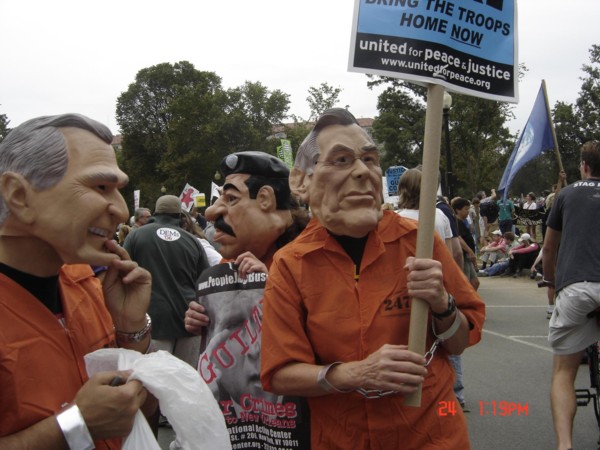
OCTOBER 2005
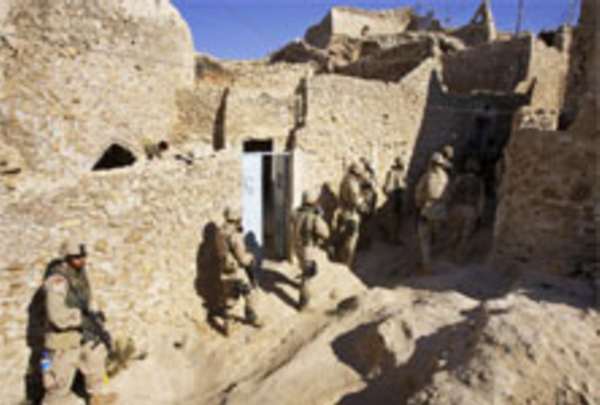
IRAQ - U.S.MASSACRE AND THEN...VENGEANCE; A CYCLE THAT MUST BE BROKEN
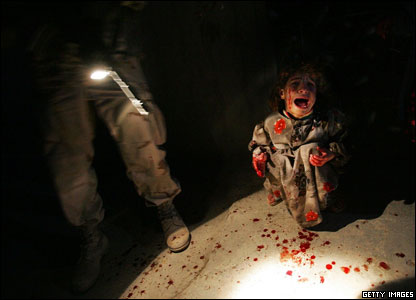
Do you remember: the children from Talafar whose parents were killed by troops in January?
Have you read this?:In his book Arab and Jew, David K. Shipler, who served the New York Times :(correspondent in Israel,)writes: "As the 11 and 12-year-old boys in Kiryat Arba explained, they are learning in their yeshivas that the Arab is Amalek, the enemy tribe that God instructed the Jews to fight eternally and destroy: `Amalek was the first of the nations; but his latter end shall be that he perish forever.' (Numbers 24:20). Hagai Segal, a settler from Ofra, was quoted in the settlers' paper Nekuda as declaring, `The Torah of Israel has nothing to do with modern humanistic atheism. The Torah yearns for revenge. Such a Torah is not humanistic.' Expressions of bellicose intolerance are given religious sanction and rationalization, which then filter into some segments of the lay population. Some rabbis, such as Eliezer Waldenberg, winner of the 1976 Israel Prize, declared that Halakha, Jewish law, required a strict separation of Jews from Arabs, preferably an apatheid system,or, better yet, the expulsion of the `goyim,' all non-Jews, from Jerusalem....Another rabbi writing in the student newspaper at Bar-Ilan University argued that the Torah prescribed genocide against the modern Amalek."
NOW:
Thousands displaced from Talafar by fighting
Report, IRIN, 12 September 2005
BAGHDAD, 11 Sep 2005 (IRIN) - Thousands of families are
fleeing the northern Iraqi city of Talafar, aid workers
confirmed, as Coalition forces conduct a military
operation against 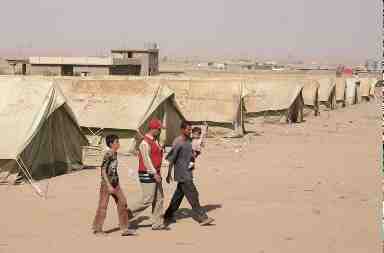 insurgents.
insurgents.
According to the Iraqi Red Crescent Society (IRCS), the
situation is critical and hundreds of families are moving
day and night to temporary camps donated and prepared by
the aid organisation.
“We need urgently supplies because we have already
run out,” Ferdous al-Abadi, spokeswoman for the
IRCS, said.
Heavy bombardment and artillery by gun-ship helicopters
as well as street fighting could be seen in the al-Saray
area of the city, Iraqi officials said.
The operation in the city, some 80 km east of Mosul city,
and near the Syrian border, started on 10 September.
With a population of more than 250,000 residents, some
50,000 families, the city had received information that
the operation may continue for a long period and that
people should leave within 72 hours from the start of the
operation.
Talafar, one of the largest cities inside Ninewa
governorate, has witnessed insecurity for the last 18
months due to insurgency that security forces are now
trying to quell.
The IRCS called on international humanitarian
organisations to help overcome a shortage of medicine and
essential materials caused by the unexpected and tragic
stampede in a Baghdad district last week.
Food cans, emergency first aid kits, blood bags, body
bags, blankets, bed sheets, and stretchers, painkillers
and anaesthetics are desperately needed, al-Abadi said.
Based on the last humanitarian report on 10 September,
the IRCS said nearly 3,000 families were already
displaced in the area between Mosul and Talafar in a
village called Abu Maria (Al-Nakhwa).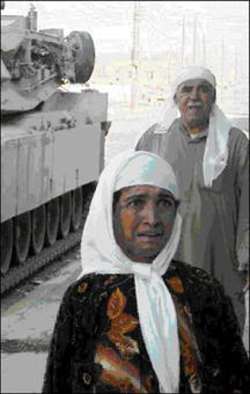
The camp is 20 km east of Talafar and has a capacity for
500 families only, but the number is expected to increase
to 5,000 families.
The camp at present has 40 toilets, 20 water tanks (with
a capacity of 1,000 – 1,500 litres each) as well as
a medical centre for first aid and emergency procedures.
“The IRCS will be able to provide relief items for
25,000 families when supported by other cooperating
organisations, but we need assistance soon and we expect
more than 20, 000 families to flee the city in the coming
48 hours,” al-Abadi added.
A few cases of diarrhoea in children were reported in the
camps, Ministry of Health officials said, maintaining
that they would give full assistance for those who have
left the city in search of a more secure place.
A relief convoy was sent to the city on Saturday morning,
but according to staff from the IRCS, it was not enough
to serve the needs of the population.
This Item is Delivered to the
"Asia-English" Service of the UN's IRIN
humanitarian information unit, but may not necessarily
reflect the views of the United Nations.
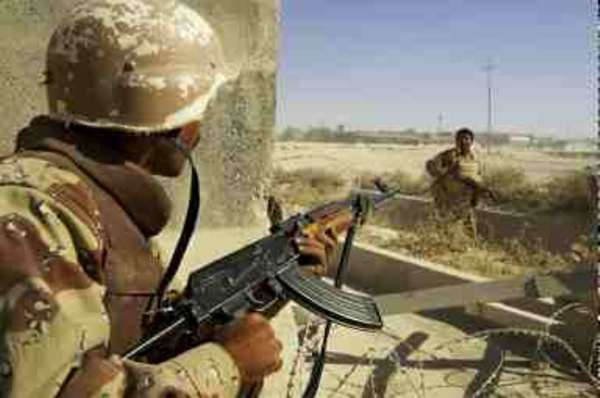
Vengeance... Scores killed in Baghdad attacks
Hundreds killed and wounded in a series of bomb attacks and shootings across Iraq.
In the worst incident, at least 112 people were killed and some 160 injured when a car bomb exploded in Baghdad's mainly Shia district of Kadhimiya.
During the night, gunmen killed 17 men
in the nearby town of Taji after dragging them from their
homes.
In a statement on a website, the Iraqui group said it
acted after US and Iraqi forces attacked insurgents in
the northern town of Talafar.
Wednesday became one of the deadliest days in Iraq since the US-led invasion in March 2003.
Tal Afar: Crackdown in the Sunni Heartland
By Mike Whitney
Al-Jazeerah, September 14, 2005
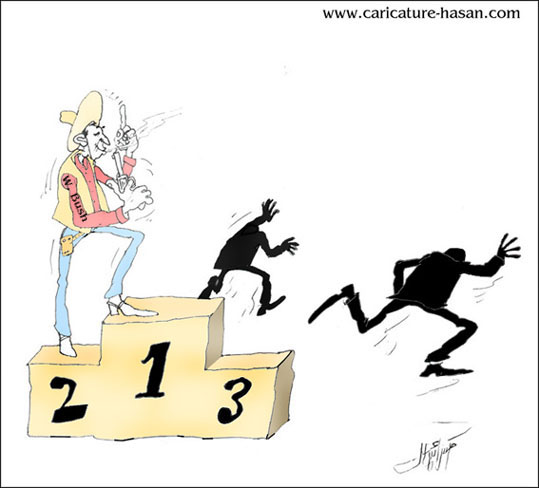
The siege of Tal Afar follows a familiar pattern of brutal American incursions into densely populated areas under the pretense of fighting terrorism. It is a ritual that is repeated endlessly despite the dismal results. The Pentagon seems to prefer these grand displays of military strength to anything that might produce a political solution. It brings to mind the old saw, “The definition of insanity is doing the same thing over and over again; expecting a different result.” This appears to be the guiding principle of the Defense Dept. with Tal Afar serving as the most recent example.
In the present case, a city of 250,000 has been almost entirely evacuated following weeks of artillery bombardment, aerial bombing raids, downed power-lines and water-system, and house-to-house searches.
Ho-hum. Such paltry events never even reach the front page of American newspapers where the ceremony of American suffering is the only topic of interest.
The remaining occupants of the city have reported the killing and maiming of innocent women and children, the use of chemical weapons, and the predictable destruction of Mosques and holy sites. In Tal Afar the Pentagon’s “Hearts and Minds” program seems to be running at high-gear.
There was no doubt that Donald
Rumsfeld would use the cover of Hurricane Katrina to
mount a massive attack in Iraq, and he didn’t
disappoint. The military conducted a 10,000 man invasion
only to find that the city had been abandoned and that
the Iraqi resistance had slipped away without incident.
Not one foreign fighter was captured during the siege
despite claims that the city was a haven for foreign
terrorists.
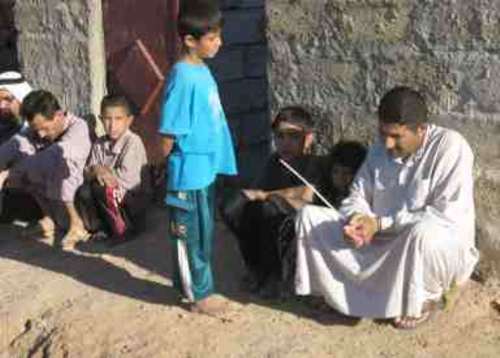
Colonel Greg Reilly told Al Jazeera that the resistance “went into hiding, avoiding us. That’s why there’s no fighting….They are not putting up a fight”.
Did O’Reilly really expect the
poorly-armed resistance to march into battle against
Abrams tanks, helicopter gun-ships, and F-18s? The
resistance applied classic guerilla tactics and
“melted away” before they were confronted by
the greater force leaving the Marines with nothing to
show for their effort except a few random prisoners.
Nevertheless, this hasn’t persuaded the Pentagon to
modify their plans of savaging the
remaining cities in the Sunni heartland. They still cling
to the vain hope that increasing the violence will quash
the resistance.
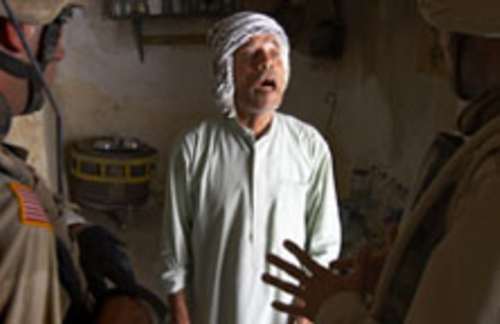
Iraq’s Prime Minister Al Jaafari has shown a surprising enthusiasm for the Rumsfeld’s blitzkrieg against the Sunnis. He gave the siege of Tal Afar his personal blessing and said that the hostilities were being conducted “on his orders”. He also announced that he was contributing thousands of newly-graduated Iraqi soldiers to the war-effort, even though his decision is bound to be unpopular among the Iraqi public. Al-Jaafari has now put himself in the same position as his predecessor, Iyad Allawi, who lost all credibility when he authorized the invasion of Falluja.
This shows the shortsightedness of
the current plan. If Rumsfeld wants to pass off
al-Jaafari as a viable political candidate, he must
appear to be independent of American influence. By
endorsing the attack on Tal Afar, al-Jaafari looks like
just another American stooge carrying water for the
occupation. Ultimately, this will undermine his
legitimacy and disrupt the plan to create a credible
“Arab fašade” to disguise the administrations
intentions.
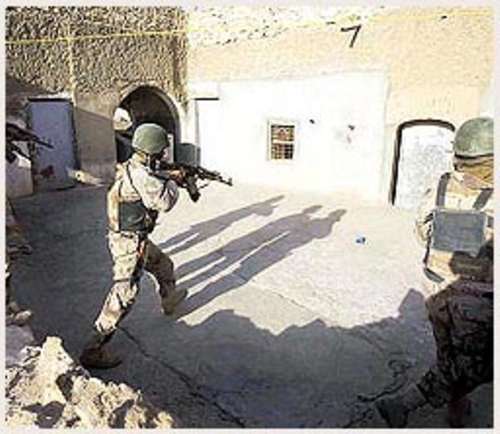
There’s very little to discuss about the botched siege of Tal Afar. The assault follows the same basic blueprint of jack-boot tactics we’ve seen in similar acts of American aggression. Tens of thousands of lives were disrupted and possibly ruined through forced evacuation, massive property damage has been sustained throughout the city, the mayor resigned in protest of the invasion, the public is more polarized than ever, 152 people were killed in the bombing with countless others detained indefinitely, the resistance fighters escaped unscathed, and the Red Cross reports that the offensive has created a humanitarian crisis that is beyond their limited resources.
In other words, the entire operation was an utter failure. The media has kept Tal Afar off the front page and framed the debacle as another crucial step in liberating Iraq from the disparate forces of terrorism.
What nonsense. Apart from the conspicuous immorality of the action, the stupidity is almost too hard to bear. Tar Afar is simply a duplication of the same failed policy we have seen over and over again for the last two years.
Has anyone in the Pentagon ever read Che Guevara or any of the other classic tomes of guerrilla warfare?
Why are the same futile policies being replicated day by day when we already know that they are doomed to failure?
Is the fog of hubris so thick at the Defense Dept that they believe that the assault on Tal Afar accomplished anything?
Rumsfeld’s simian theories of warfare have proved to be the greatest boon to the burgeoning Iraqi resistance. Like all headstrong amateurs he soldiers-on; ignoring adversity or experience, determined to demonstrate the wisdom of his own narrow vision. Regrettably, that vision is comprised of nothing more than ever-increasing levels of violence erratically extended across the region.
There’s nothing more dangerous
than a well-armed dilettante who is convinced of his own
genius. Tal Afar leaves no doubt about that.
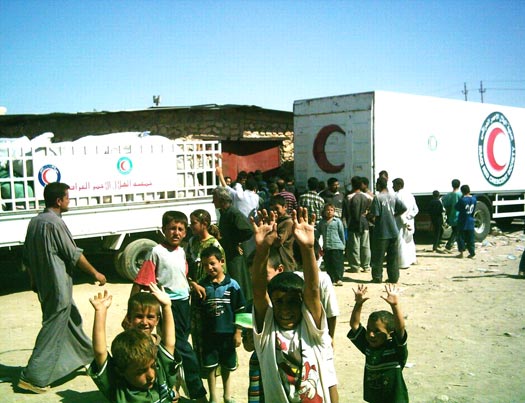
BAGHDAD, 21 Sep 2005 (IRIN) - Nearly 1,500
displaced Iraqi families have returned to the northern
city of Talafar after Coalition forces ended an operation
to rout insurgents hiding there, but the returnees said
dozens of their homes had been totally destroyed. The
Iraq Red Crescent Society (IRCS) said on Tuesday that
despite the returns, thousands of displaced people were
still living in camps surviving on aid from various
humanitarian organisations.
One of the main IRCS camps near the city, which is
located just 60 km from the Syrian border, was
half-empty. The camp, with 750 tents, housed 3,000
families at the height of the recent fighting.
"We don't have full information on what returnees
are finding there [in Talafar]. Our efforts are now to
address the difficulties of those still displaced in
camps and villages around Talafar," Ferdous
al-Abadi, spokesperson for the IRCS, said. Some residents
complained that some operations were still ongoing –
making the city insecure. "My husband was killed
inside Talafar a week ago. Today I went to check our
house and see if everything was still there. I cannot
stay there and [so I] returned to this camp because at
least there is security here," said Samira Muhammad,
42, a tearful mother of four. The fighting has also
disrupted the school year, which has now been delayed
across the city. Checkpoints remain and returning
residents were subjected to heavy security checks.
Up to 5,000 families fled their homes in Talafar when
fighting between Coalition forces and insurgents started
earlier this month. "We are talking 20-25,000
people," Jette Soerensen, spokesperson for the
International Committee of the Red Cross in Geneva
(ICRC), told IRIN on Saturday. The displaced families
took refuge in surrounding towns and villages – some
with friends or relatives. Others, however, were living
in abandoned villages or small camps, with no access to
such basic items as food, water or bedding, the IRCS
said.
On Tuesday, the IRCS said some 2,000 displaced families
are still living with relatives in the city of Mosul,
some 400 km from the capital, Baghdad. In the area of
Ayadhyia, a village 10 km north of Talafar, some 350 are
camped while another 450 families are in the village of
Sheikh Ibrahim. IRCS said Shi’ites from Talafar had
chosen a temporary camp in the city of Kerbala, some 184
km from the capital. Various agencies and NGOs including
the United Nations children’s fund, World Health
Organization, the ICRC, Emirates and Turkish Red Crescent
Societies have been distributing blankets, food parcels,
medicines and other essential needs to the displaced
people.
Since the fighting started, no humanitarian organisations
have been authorised to enter the city. The IRCS said it
had now been allowed to send its disaster team to Talafar
on 23 September to make a detailed study of the
situation."They have been delaying our entrance
inside Talafar to prevent [us from seeing] the reality
and destruction that the city has suffered during this
fighting, even the death toll has not been reported
yet," al-Abadi added.The ICRC called for more
assistance to humanitarian organisations assisting the
displaced families. It urged those involved in the
fighting "to respect the basic rules of
international humanitarian law that are applicable in
Iraq".
Up to 3,800 United States forces and 5,000 Iraqi troops
took part in the operation in which 153 terrorists have
been killed and 187 captured, US officials said, denying
there were civilian casualties.
However, Surkassi Ahmed, a doctor at the local hospital,
said there had been civilian casualties. "We have
received cases of deaths of women, children and the
elderly in our hospital," he noted.
This Item is Delivered to the
"Asia-English" Service of the UN's IRIN
humanitarian information unit, but may not necessarily
reflect the views of the United Nations. For further
information, free subscriptions, or to change your
keywords, contact e-mail: IRIN@ocha.unon.org or Web:
http://www.irinnews.org. If you re-print, copy, archive
or re-post this item, please retain this credit and
disclaimer. Reposting by commercial sites requires
written IRIN permission.
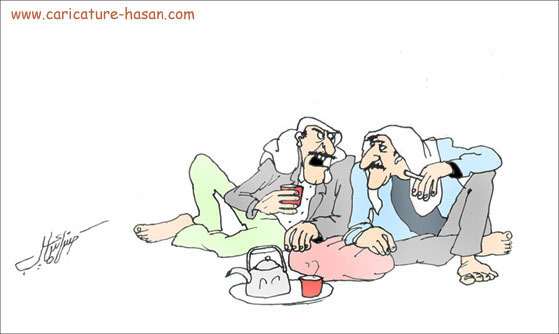
"The combination
of US government owned ammo plants and those of US
commercial producers together cannot make bullets as fast
as US troops are firing them. The Bush administration has
had to turn to foreign producers such as Israel Military
Industries. Think about that. Hollowed out US industry
cannot produce enough ammunition to defeat a 20,000 man
insurgency. !!!"
